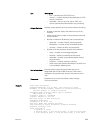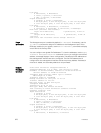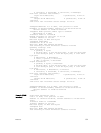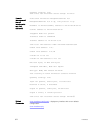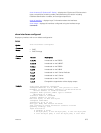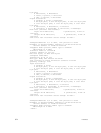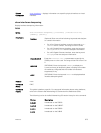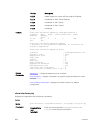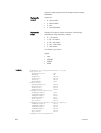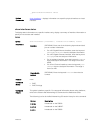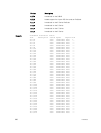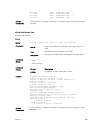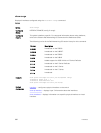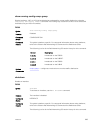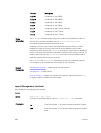Command
Modes
• EXEC
• EXEC Privilege
Command
History
This guide is platform-specific. For command information about other platforms,
refer to the relevant Dell Networking OS Command Line Reference Guide.
The following is a list of the Dell Networking OS version history for this command.
Version Description
9.2(1.0) Introduced on the Z9500.
8.3.19.0 Introduced on the S4820T.
8.3.11.1 Introduced on the Z9000.
8.3.7.0 Introduced on the S4810.
8.1.1.0 Introduced on the E-Series ExaScale.
7.6.1.0 Introduced on the C-Series and S-Series.
6.5.4.0 Introduced on the E-Series.
Usage
Information
The following describes the show interfaces tengigabitethernet
command following example.
Mode Control Indicates if auto negotiation is enabled. If so, indicates
the selected speed and duplex.
Mode Status Displays auto negotiation fault information. When the
interface completes auto negotiation successfully, the
autoNegComplete field and the linkstatus field read
“True.”
AutoNegotiatio
n Advertise
Displays the control words the local interface advertises
during negotiation. Duplex is either half or full. Asym- and
Sym Pause is the types of flow control the local interface
supports.
AutoNegotiatio
n Remote
Partner’s Ability
Displays the control words the remote interface advertises
during negotiation. Duplex is either half or full. Asym- and
Sym Pause is the types of flow control the remote interface
supports.
AutoNegotiatio
n Expansion
ParallelDetectionFault is the handshaking scheme in which
the link partner continuously transmit an “idle” data packet
using the Fast Ethernet MLT-3 waveform. Equipment that
does not support auto-negotiation must be configured to
exactly match the mode of operation as the link partner or
else no link can be established.
1000Base-T
Control
1000Base-T requires auto-negotiation. The IEEE Ethernet
standard does not support setting a speed to 1000 Mbps
with the speed command without auto-negotiation. E-
Interfaces
877



